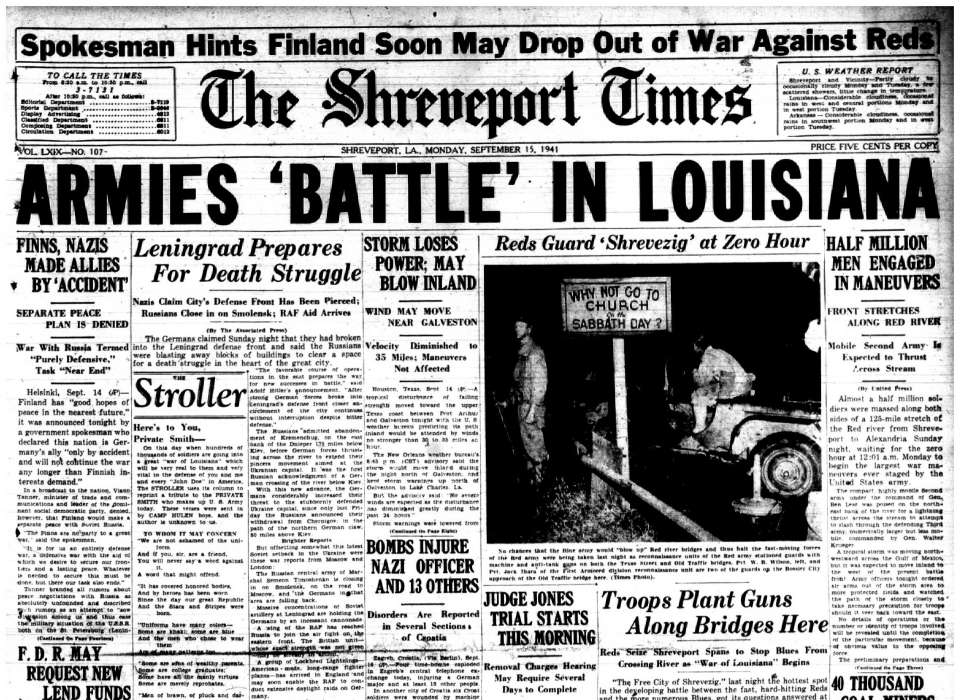|
By Dick Martin Have you ever heard of the “Louisiana Maneuvers” as they pertain to WWII? I had not until a few years ago when I began researching and writing the biographies for our Springfield WWII Veterans and mention of the maneuvers kept popping up. The more they popped up the more curious I became. I finally had to find out what they were.
In September of 1941, just a few months before Japan’s attack on Pearl Harbor and the beginning of the WWII for the US, the United States was still playing war games. Throughout that month the US Army staged the Louisiana Maneuvers, the most extensive field exercises in its history. Thousands of GIs, some from Springfield, were fighting sham battles across central Louisiana prairies, cotton fields, and pine-covered hills. The outbreak of the war in Europe forced preparedness in the United States and in 1940 the US Army picked central Louisiana as a training ground. The warm climate allowed for year-round training, and the remote woodlands offered plenty of space. Four camps were created to facilitate the operations. Fort Polk survives to this day. The maneuver was vast, extending from East Texas across Louisiana to its eastern border. Nearly half a million troops participated in the maneuvers with emphasis placed on armor operations; but infantry, air forces, paratroopers, and even cavalry troopers on horseback taking part as well. . The training was plagued numerous times by tropical storms. The maneuvers made and broke many senior officers for later leadership positions in the upcoming war. Never-the-less, the operations took place in two phases consisting of a who’s who of future major players in WWII, ie Colonel Dwight D Eisenhower, Major George S Patton, Lesley McNair, and George C Marshall, just to name a few. Obviously, blanks were used in place of live rounds and bridges were simulated blown and put out of action. A joke went around that troops crossing a bridge that had been blown in simulation were accosted by a grader who screamed at them “Can’t you see the bridge has been destroyed” and they replied “Can’t you see we are swimming.” Despite all of the men and equipment used in the exercises, only one pilot died in a midair collision and two troopers drowned in the rain-swollen rivers. By the time the maneuvers ended on September 28, the soldiers had gained some valuable insight into the rigors of a war campaign and the tactical and strategic problems that would confront them. Taken from an article in the October 2018 WWII magazine “Homegrown War Games” written by Mark D Van Ells
1 Comment
|
Categories
All
Archives
October 2023
|
